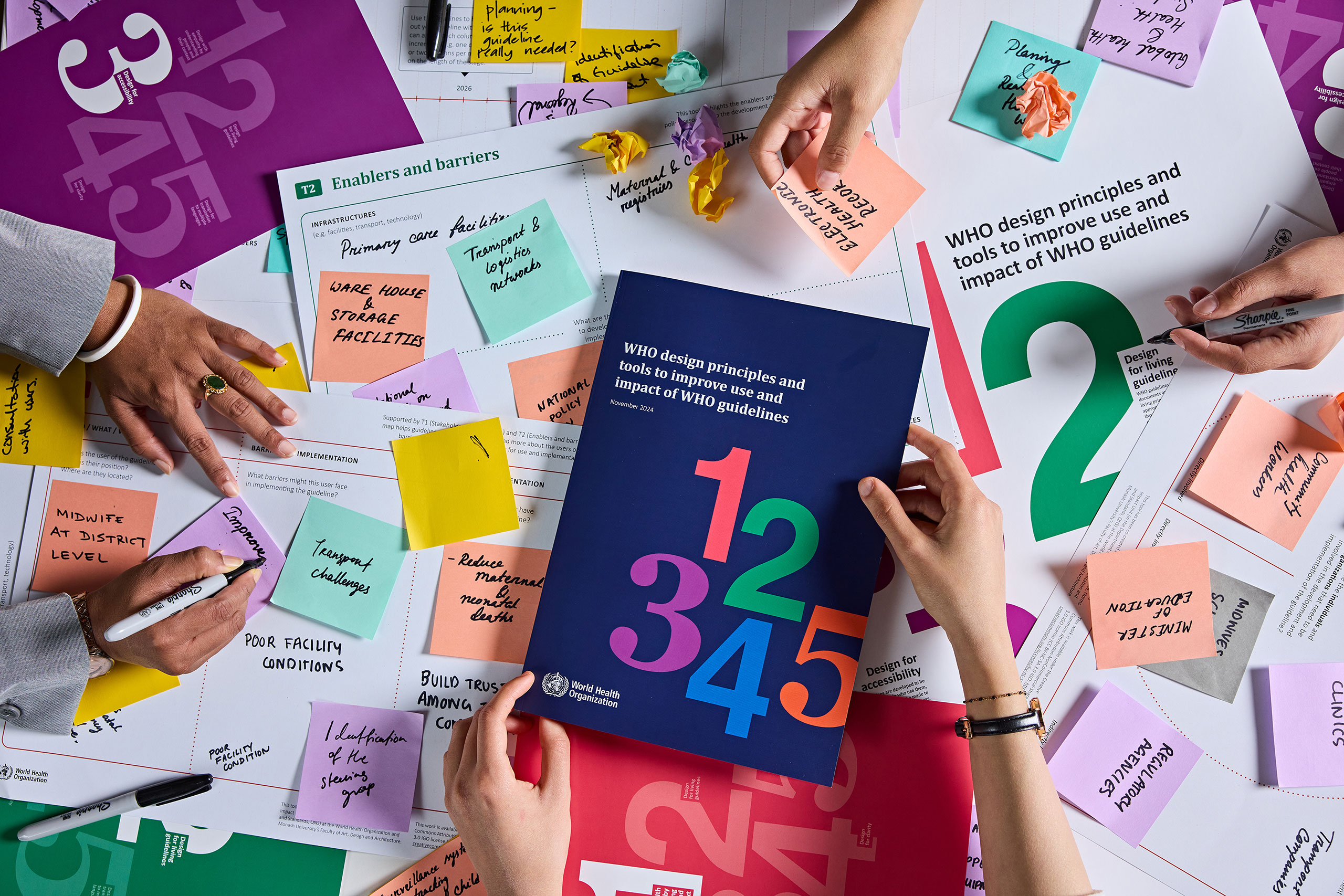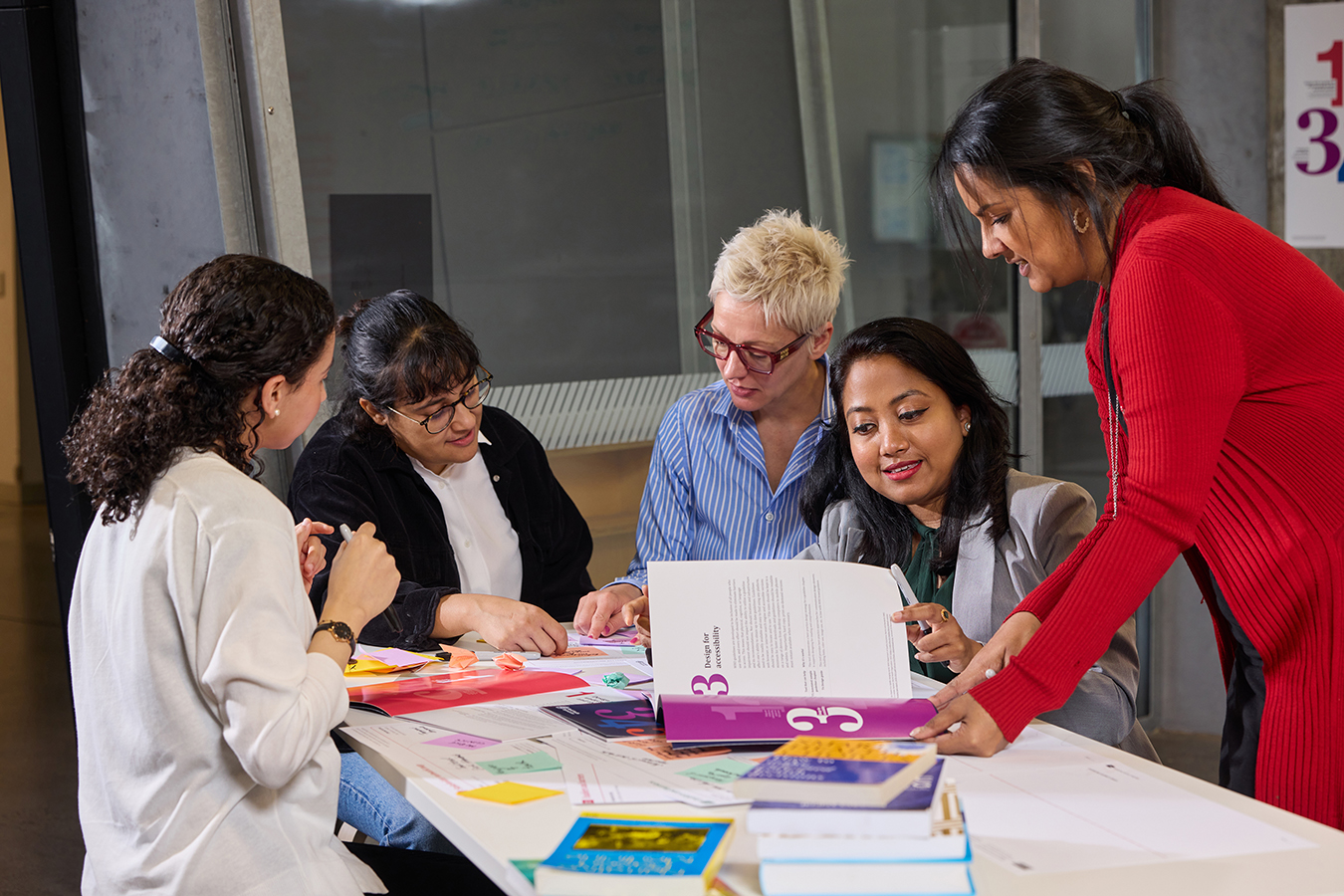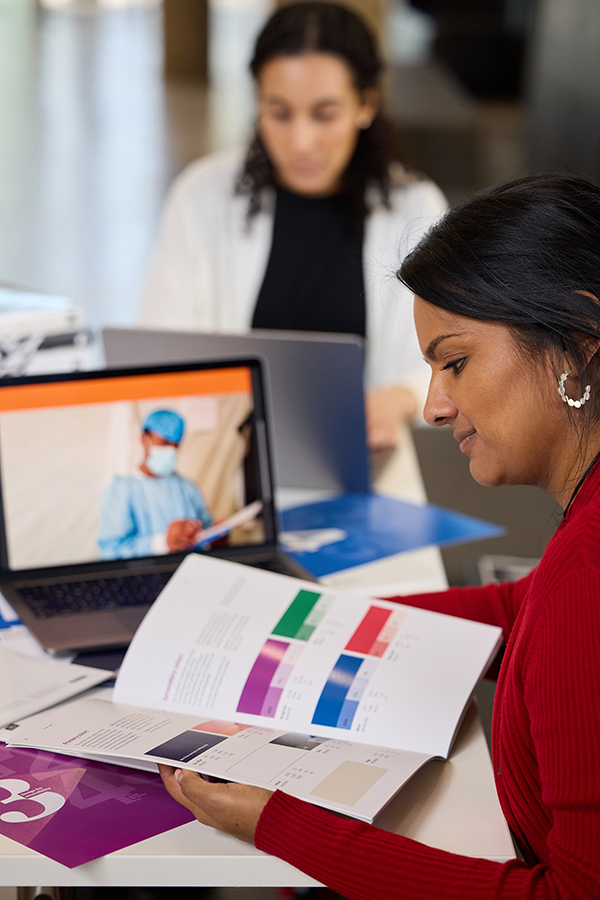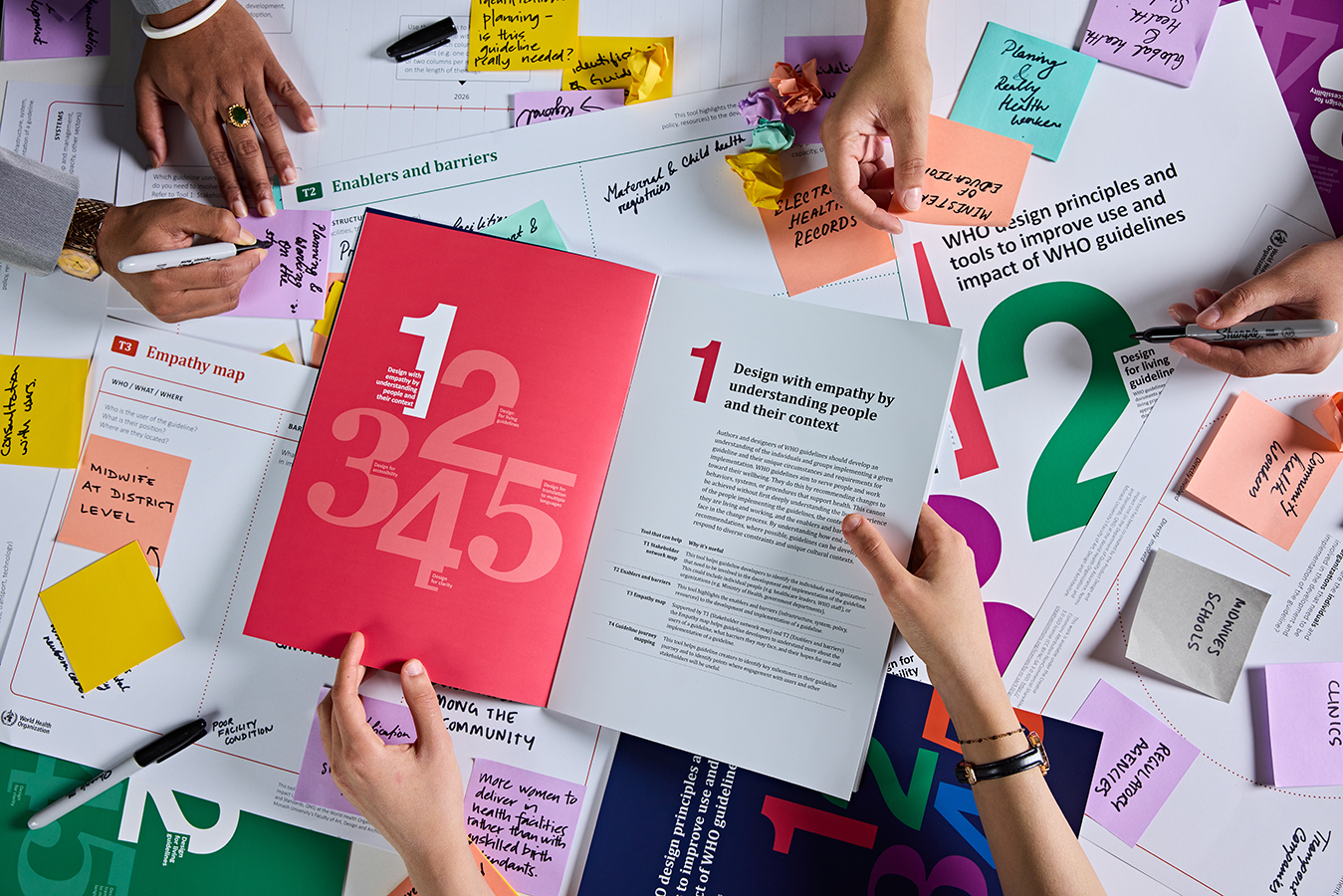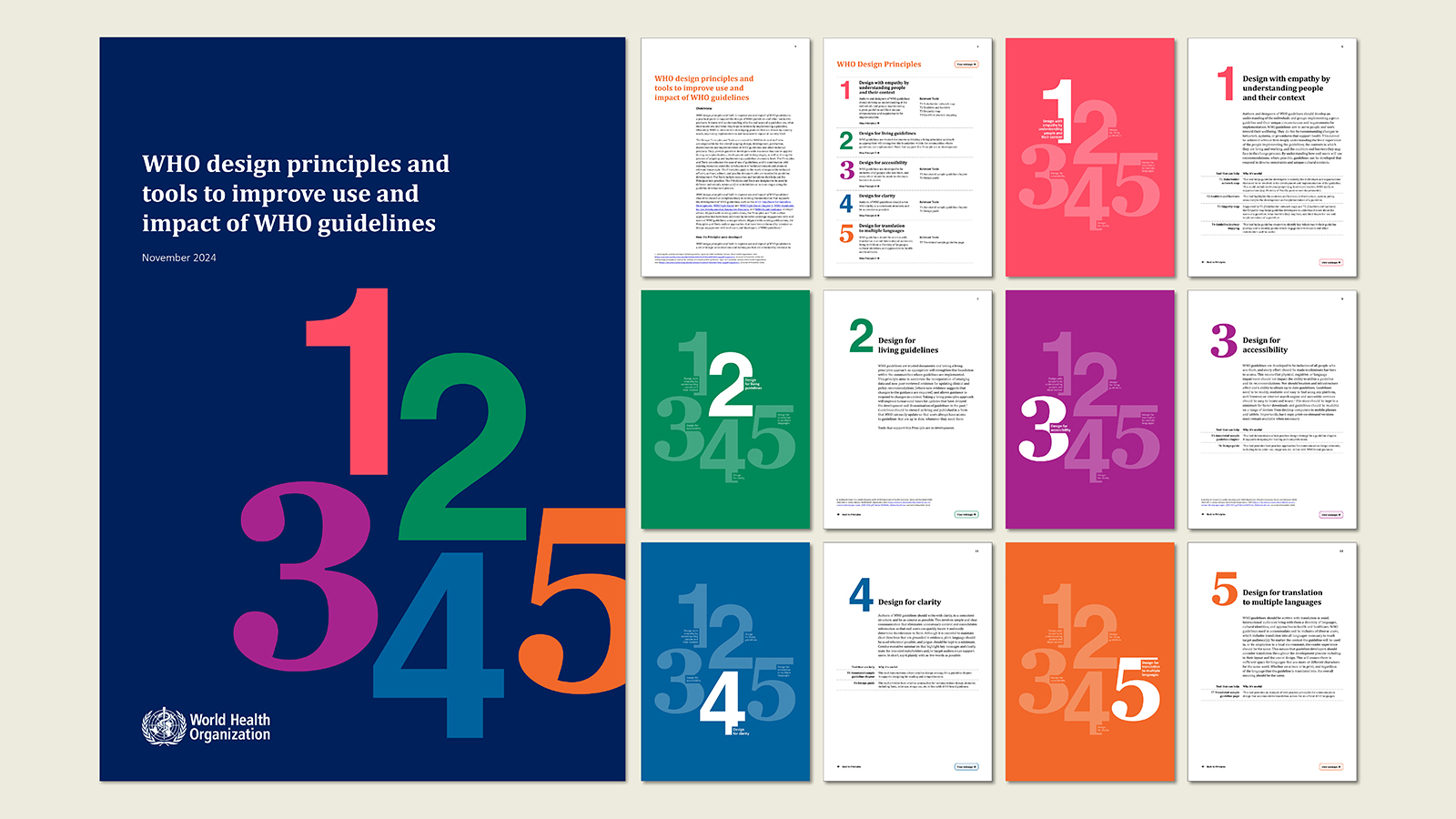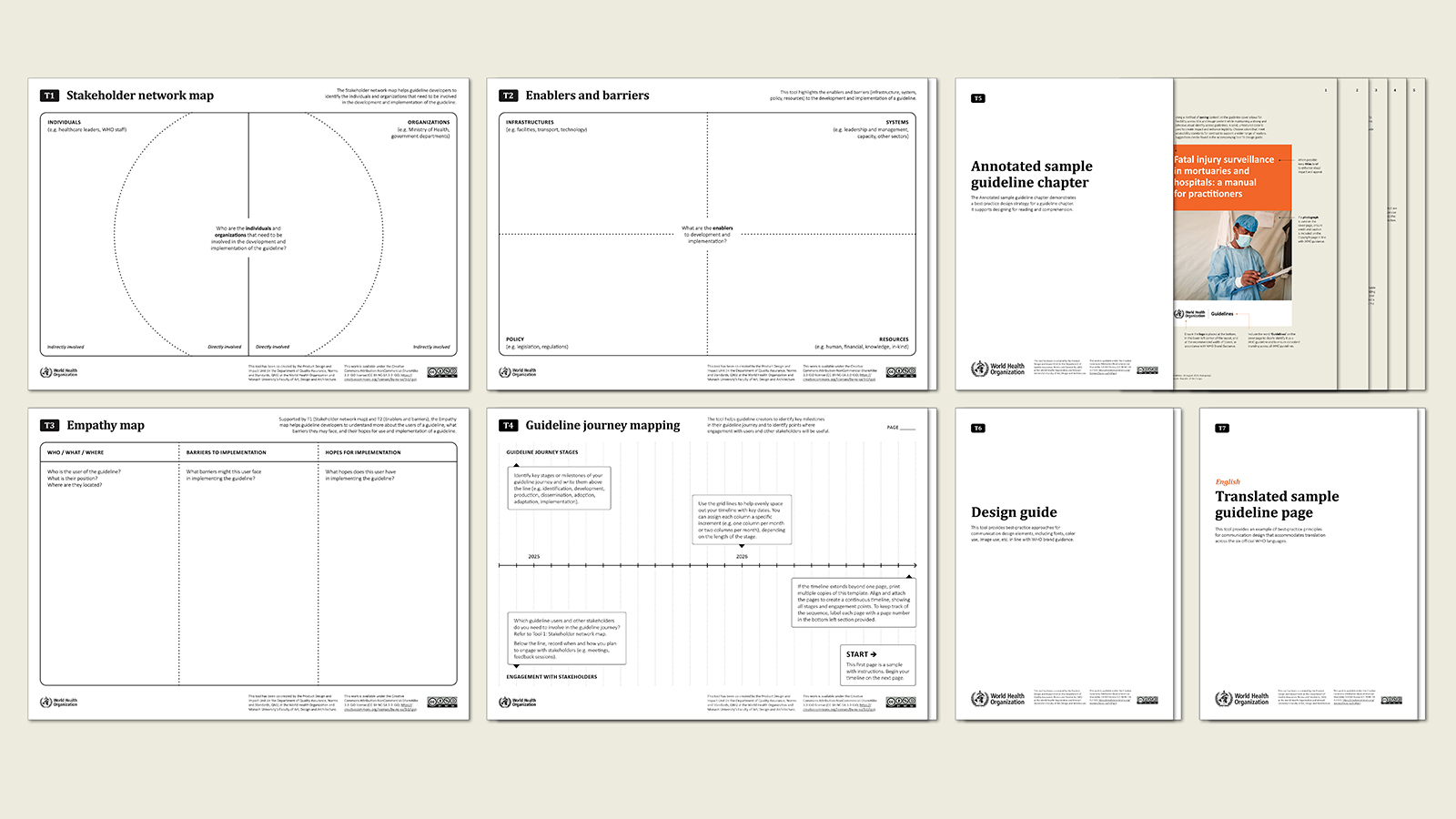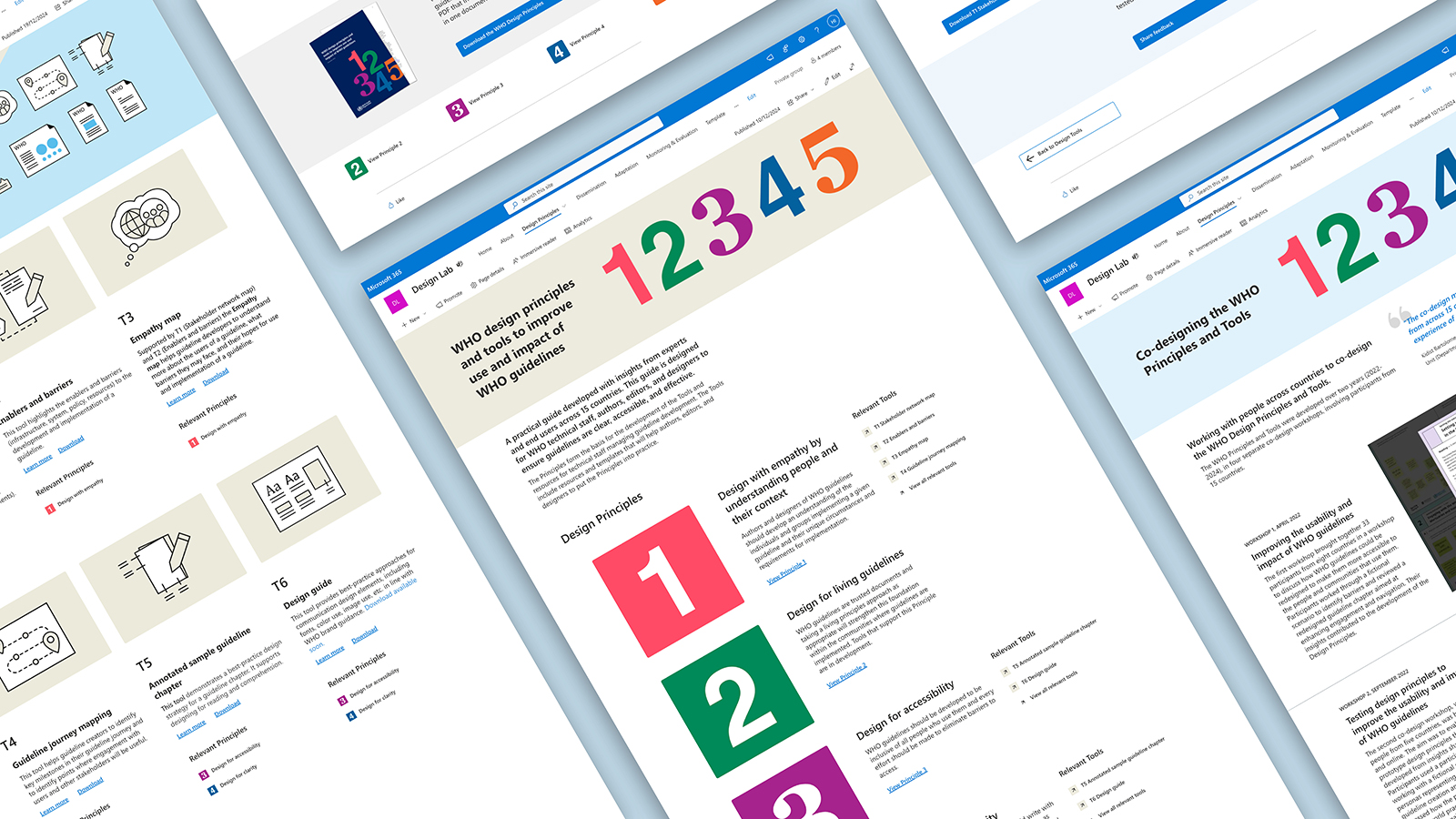The WHO Principles and Tools emerged from a rigorous global co-design process involving extensive stakeholder collaboration with 15 diverse countries across five of the six WHO regions. Participants included healthcare leaders, ministries of health and transport, WHO regional offices, and community representatives, ensuring comprehensive understanding of real-world needs. The Principles support the WHO to embed end-user needs in guideline development, while the Tools provide tangible design methods for empathising with users, designing for accessibility, clarity, translation, and a global movement to ‘living’ content powered by AI.
Over 2.5 years, MADA facilitated four iterative co-design consultations. Initially, 33 participants from eight countries explored barriers to guideline accessibility and implementation, informing the creation of seven prototype Principles. A subsequent consultation with 22 participants across five countries refined these principles, emphasizing clarity, accessibility, translation, and practicality.
The third and fourth consultations shifted focus to developing tangible, practical tools that support guideline mapping, clear writing, visual clarity, translation readiness, and adaptive digital formats. Participants included technical experts in translation, accessibility specialists, and WHO guideline developers, ensuring tools were practical, inclusive, and effective. This innovative process resulted in a robust, tested suite of Principles and Tools.
The resource was launched in December 2024 and is available to guideline developers in all WHO Member States (194 countries in six regions) via the WHO SharePoint system, ensuring it is embedded into workflows and processes. A public-facing version of the resource is also available on the WHO website, supporting the work of guideline developers globally.
The project’s methods and findings have been documented in two WHO reports and an academic publication (others in review), guiding broader organisational adoption and underscoring the value of design methods in global health contexts.

